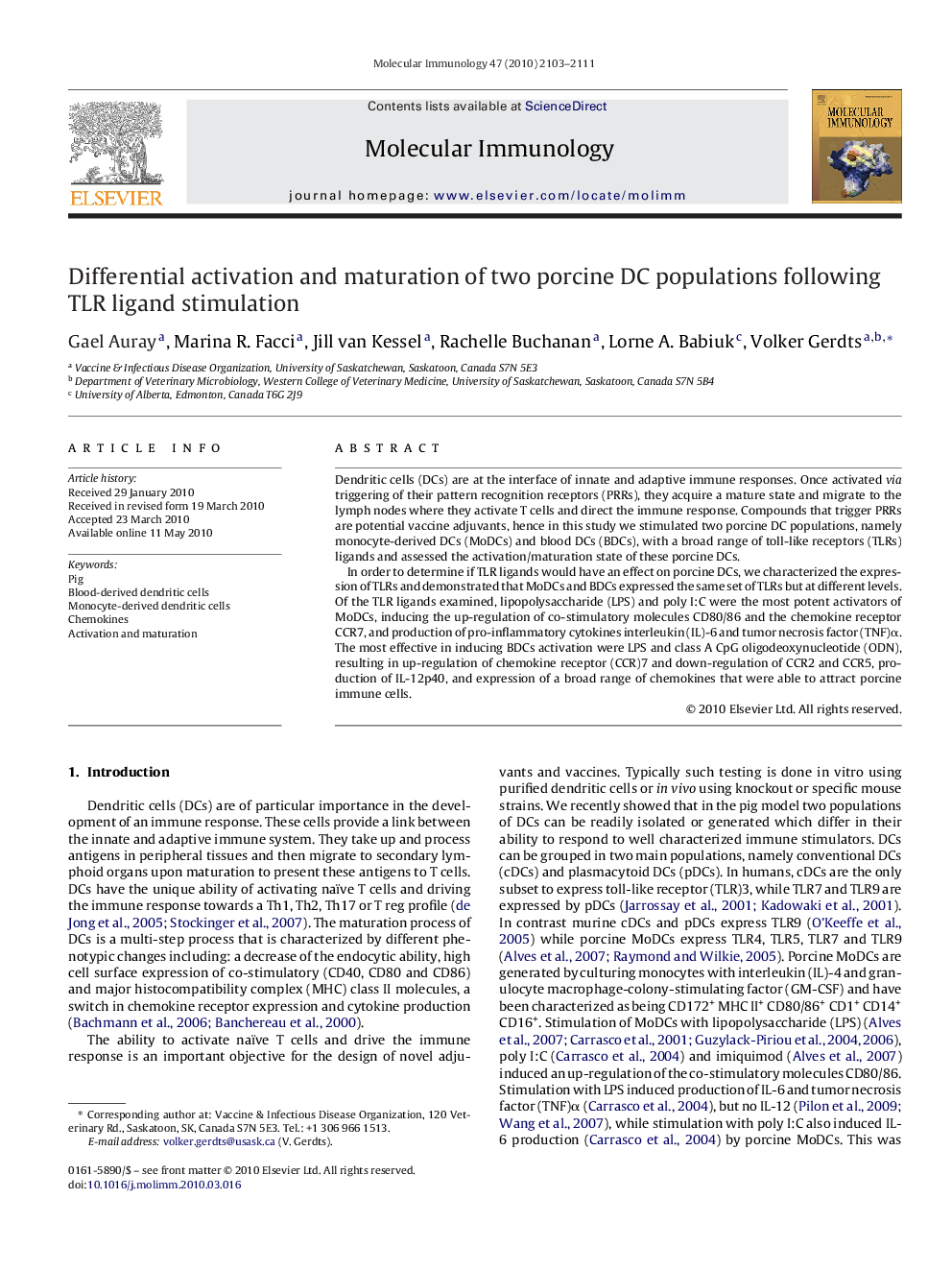| Article ID | Journal | Published Year | Pages | File Type |
|---|---|---|---|---|
| 2832168 | Molecular Immunology | 2010 | 9 Pages |
Dendritic cells (DCs) are at the interface of innate and adaptive immune responses. Once activated via triggering of their pattern recognition receptors (PRRs), they acquire a mature state and migrate to the lymph nodes where they activate T cells and direct the immune response. Compounds that trigger PRRs are potential vaccine adjuvants, hence in this study we stimulated two porcine DC populations, namely monocyte-derived DCs (MoDCs) and blood DCs (BDCs), with a broad range of toll-like receptors (TLRs) ligands and assessed the activation/maturation state of these porcine DCs.In order to determine if TLR ligands would have an effect on porcine DCs, we characterized the expression of TLRs and demonstrated that MoDCs and BDCs expressed the same set of TLRs but at different levels. Of the TLR ligands examined, lipopolysaccharide (LPS) and poly I:C were the most potent activators of MoDCs, inducing the up-regulation of co-stimulatory molecules CD80/86 and the chemokine receptor CCR7, and production of pro-inflammatory cytokines interleukin (IL)-6 and tumor necrosis factor (TNF)α. The most effective in inducing BDCs activation were LPS and class A CpG oligodeoxynucleotide (ODN), resulting in up-regulation of chemokine receptor (CCR)7 and down-regulation of CCR2 and CCR5, production of IL-12p40, and expression of a broad range of chemokines that were able to attract porcine immune cells.
